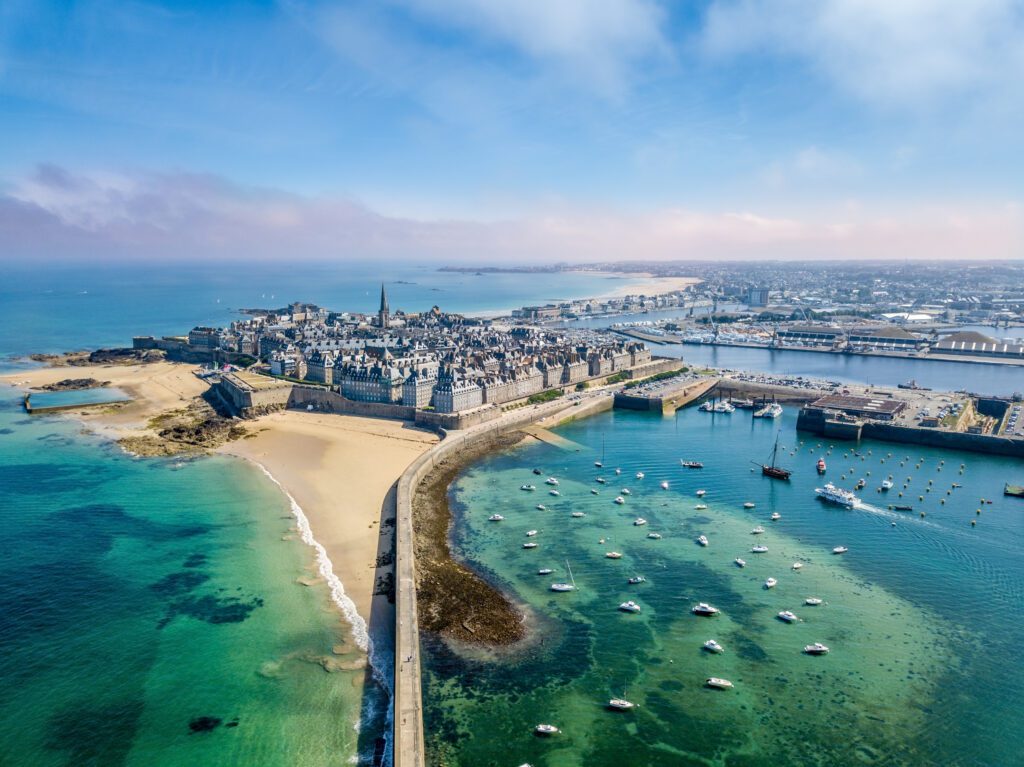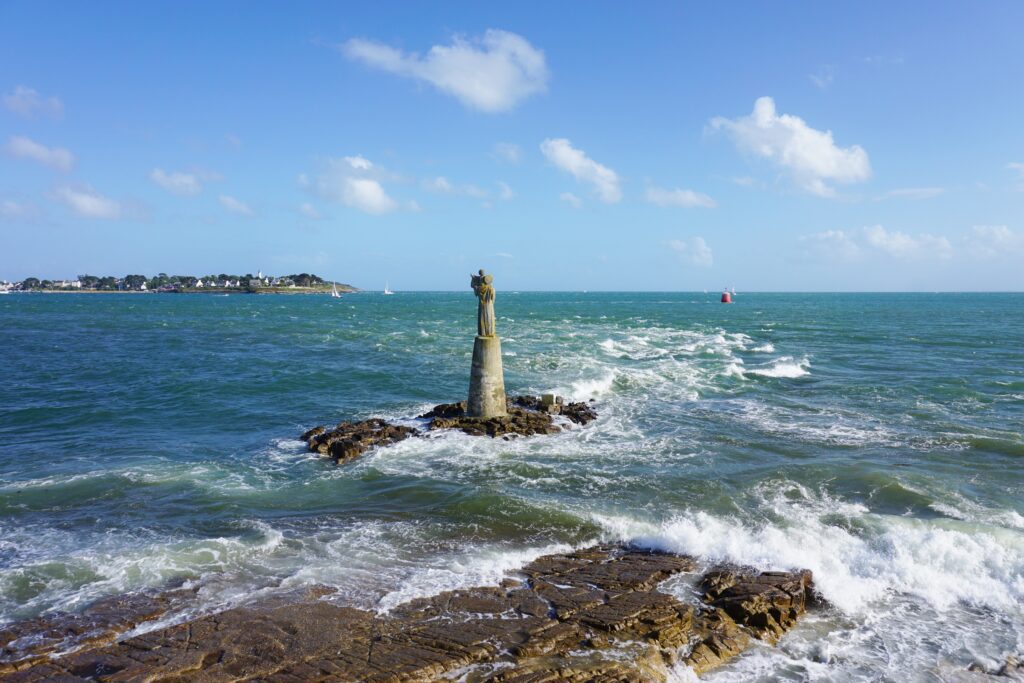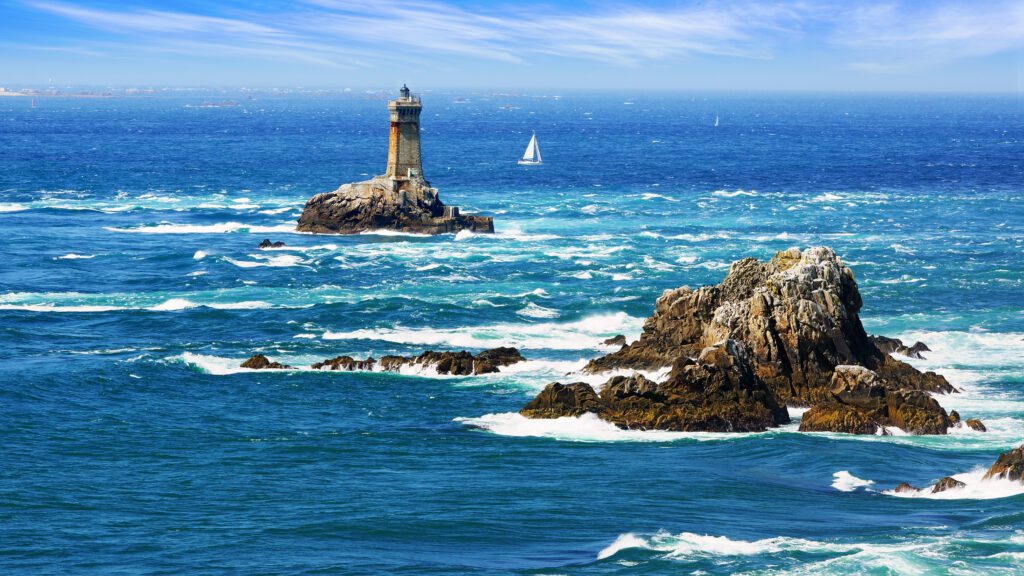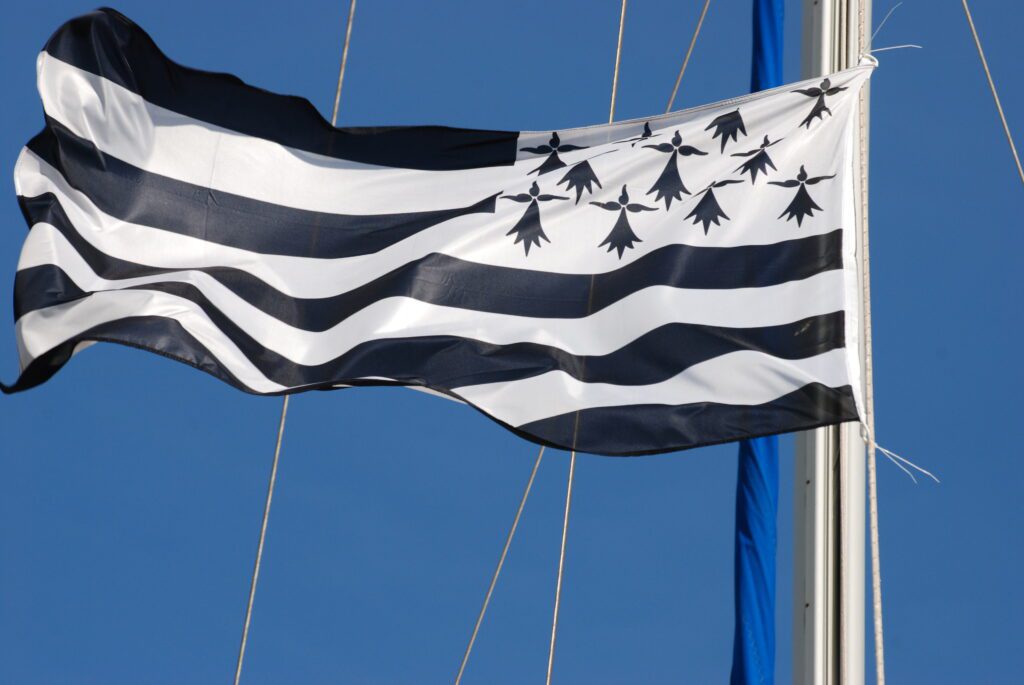Publication date: 05/14/2024
Brittany, a renowned sailing region
Did you know that Brittany alone has more than 250,000 registered boats? It’s France’s leading region for boating activities, both in terms of visitor numbers and the infrastructure available to boaters. And it is, indeed, an exceptional destination when it comes to boating!
From north to south, Brittany is particularly popular with sailors. Every year, from May to September, they enjoy ideal sailing conditions. There are many places of interest to explore in the area.
Whether you’re sailing or motorboating, Brittany has a number of different sailing areas or basins:
- The Emerald Coast and maritime Rance
- The Bay of Saint-Brieuc
- The Pink Granite Coast
- Morlaix Bay
- The land of Leon
- The Abers coast
- Brest harbour
- Douarnenez Bay
- Audierne Bay
- The Glénan archipelago basin, and the Odet maritime area
- Cornouaille
- Lorient harbour
- Quiberon Bay and the Gulf of Morbihan
- Vilaine Bay and the Vilaine Maritime
Sailing in Brittany: destinations to discover
North Brittany is home to a number of typical, authentic ports, each more charming than the last. From its border with Normandy – near the Bay of Mont-Saint-Michel – to the Sea of Iroise in the west, the North Brittany coastline offers a wide variety of landscapes. Many natural areas can be discovered by sailboat or motorboat, following the rhythm of the tides, or on foot along the “sentier des douaniers” .
Not to be missed on a boat in North Brittany:
- The maritime city of Saint-Malo and its ramparts
- Paimpol and its natural, cultural and gastronomic discovery activities
- The island of Bréhat and its fishing village
- The Bay of Saint-Brieuc and its coastal landscapes
- Plougasnou and the customs trail
- The port town of Roscoff and the island of Batz, renowned for its exotic gardens
➡️ See also: Paimpol, a Breton town with a rich port history

In the Iroise Sea, on the west coast of Brittany, many sailors visit the Ponant islands of Ouessant, Molène and Sein, the Bay of Douarnenez, the Bay of Brest… At the “end of the world”, in the heart of the Iroise Marine Park, they often have the opportunity to sail alongside several remarkable marine species.
Equally renowned, Southern Brittany also offers attractive destinations: from the Mer d’Iroise in the west to the borders of the Loire-Atlantique department in the east, the sailing area is particularly appealing to sailing enthusiasts. With a prevailing westerly wind and currents a little easier to handle than in North Brittany, this is still a wild region, with many memorable islands, harbours and anchorages.
The islands of Southern Brittany – the Glénan archipelago, Groix, Belle-Ile, Houat and Hoëdic – as well as several major coastal ports such as Concarneau, Lorient and Quiberon are definitely worth a visit.
Not to be missed when sailing in Southern Brittany:
- Groix and the Sables blancs beach – Europe’s only convex beach!
- The island of Houat and the Fort d’En Tal
- Hoëdic and its wild landscapes
- Belle-Ile-en-Mer, with the ports of Sauzon and Le Palais
- The Glénan archipelago, with its turquoise Caribbean waters

Last but not least, boaters and yachtswomen can also enjoy sailing on the rivers of Brittany, depending on their craft: on the Rance, in the Abers, on the Aven, on the Belon, on the Laïta, on the Blavet, on the Rivière d’Auray or on the Vilaine, for example. They can also take advantage of the many canals that criss-cross the interior of the region. An opportunity to (re)discover yet more varied landscapes!
Different climates and conditions
From north to south, Brittany offers sailors and motorboaters a wide range of destinations with very specific climates.
North Brittany is cooler and wetter, while South Brittany has a temperate summer climate, drier and sunnier. We’re talking about over 1,800 hours of sunshine a year in Southern Brittany, compared with 1,300 hours in Northern Brittany!
Both coasts are subject to tides, although the north coast is more affected: the tidal range is greater, impacting navigation. North Brittany is also windier, with the presence of thermal winds.
Throughout Brittany, sailing is possible all year round, subject to good weather conditions. From May to September, conditions are ideal and sailing is particularly pleasant.
However, some areas are famous for the difficulty they represent, 12 months a year, for boaters. There is, for example, the Raz de Sein passage – a rocky area with particularly strong currents, to enter or leave the Iroise Sea – or the Gulf of Morbihan where, between the Île de la Jument and the Île Berder, the Jument current regularly reaches over 9 knots at the height of the tide. It’s one of the strongest currents in Europe!
There are also several shoals to avoid, such as the Héaux de Bréhat, which are the source of a breaking swell during high tidal ranges.

In North or South Brittany, essential precautions
Whichever area you choose to sail in Brittany, north or south, you need to take a few precautions. To make sure they’re on the safe side, and get the most out of their outing!
Find out about the weather
It’s every boater’s duty to keep abreast of the weather forecast, both before you set out on your voyage – in North or South Brittany – and once you’re out at sea. You can prepare your cruise by consulting several reliable sources, and continue to monitor developments on board, for example by listening to the weather report on your VHF.
Know the navigation rules and regulations
As a boater, you’re already familiar with the regulations governing pleasure boating, and already hold the navigation license required to pilot your craft. But before you set off on your voyage, you’ll need to find out about the accessibility of the areas you plan to visit: do you need specific authorization to sail or anchor there? What protected areas are there in the region? Are there any speed restrictions, or particular behaviors to adopt or avoid? If you plan to fish, is it authorized?
Find out about the navigation area you plan to visit
As with sailing anywhere, before setting out to sea, it’s important to be equipped with the relevant nautical charts. You’ll need to read the charts beforehand, in preparation for your outing, to get a feel for the area and anticipate any difficulties. You’ll be able to spot hazards, markers and landmarks that can help you navigate, as well as any shoals.
Consider tide times
To ensure safe sailing, you should also study the tide times carefully: it’s always advisable not to take the risk of sailing against the current, and to take advantage of the tidal current in its direction, wherever you wish to sail in Brittany. Tidal currents can be very strong indeed! When choosing your sailing program, take into account the coefficients, wind, sea state and currents.
To ensure safe sailing, you should also study the tide times carefully: it’s always advisable not to take the risk of sailing against the current, and to take advantage of the tidal current in its direction, wherever you wish to sail in Brittany. Tidal currents can be very strong indeed! When choosing your sailing program, take into account the coefficients, wind, sea state and currents.

Sailing in Brittany from Port Adhoc
It’s your turn to discover Brittany by boat! On the north coast of Brittany, our teams will be delighted to welcome you to Port Adhoc Paimpol, one of our group’s marinas.
The dry port offers 240 boat spaces on racks, dedicated to boaters wishing to explore the Breton region by boat. Boats up to 8.50 meters in length can park comfortably, and be launched and taken out of the water every day of the year. Visit the Port Adhoc Paimpol page to find out more!
